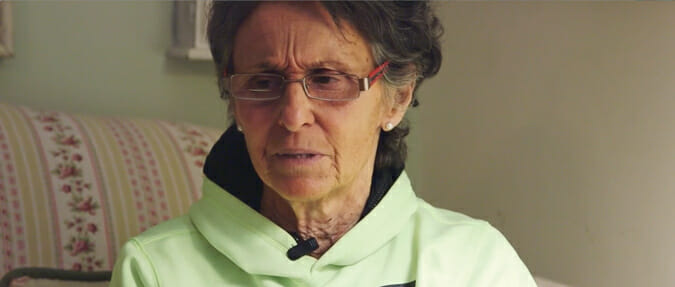It’s borderline idiotic to opine that one disease state receives less respect than others. We’re not dealing with athletes or regional cuisine; we’re dealing with sick people, many of whom are indirectly harmed when their condition receives less respect — in the form of attention and funding — than the next.
That said, lung cancer sure seems to receive short shrift within oncology. It claims more lives every year than breast, prostate, and colon cancer combined, yet somehow isn’t perceived as life-threatening or “bad” as those other diseases.
As witnessed by the very existence of the following campaigns, that’s in the process of changing. Each of the approaches is valid and more ambitious than a great majority of the campaigns that preceded them. Here’s why they work — and why they matter.

Approach 1
Start with the science: The scariest things tend to be the ones about which we have no knowledge; clearly, cancer fits that description. Even in the Dr. Google era, there remains a sizable knowledge deficit among cancer patients. This gap is even more pronounced within the lung cancer sphere, starting with information as fundamental as whether nonsmokers can suffer from it (of course they can).
See also: Merck launches DTC campaign for Keytruda
Perhaps that’s why Merck, in partnership with actor/singer Bellamy Young and a who’s who of lung cancer patient advocacy groups, focuses on the science in Test. Talk. Take Action. The awareness campaign is designed to call attention to treatment options for non-small cell lung cancer.
Rather than the usual “here’s what you can expect” spiel, the campaign’s launch video focuses on biomarkers — specifically, on how biomarkers found in cancer cells can help physicians personalize lung cancer treatment regimens. The campaign assumes a degree of intelligence among its audiences, yet it manages not to come across as cold and clinical. That’s a tricky line to toe. Agency: Twist Mktg
Approach 2
Dumb it down: Sometimes the savviest approach is the one that assumes little to no comprehension among target audiences. This may be detested by pharma and healthcare marketers who pride themselves on a depth of knowledge their consumer packaged goods peers can’t match, but that’s the reality of the situation.
See also: How Excedrin brought VR to drug marketing with The Migraine Experience
In that spirit, Novartis provides the easiest to comprehend immuno-oncology primer to date in Harnessing the Science of Immuno-oncology at Novartis. No, this explainer video isn’t specific to lung cancer, but it approaches its mission by employing the widest of wide-tent tactics — cartoons and euphonic narration.
Might some object to the outfitting of illustrated cancer cells in old-school football helmets? Maybe, but those observers aren’t the ones this lively, assured clip is aimed. All pharma marketing should be so accessible. Agency: DNA Communications
Approach 3
Incite revolution: Or at least position your particular effort as something that’s bigger than any one brand or organization. There’s a tendency in oncology marketing to think small — which, admittedly, makes sense, given the breadth of the therapeutic category. But given lung cancer’s second-tier status among cancers, perhaps it’s worth attempting not just to rally the troops, but also to pull in social media bystanders?
See also: Novartis sets out to debunk misconception that only smokers get lung cancer
That seems to be the thinking behind Flip to Breathe, a program backed by lung cancer advocacy group Free to Breathe. Hoping to spark a wave of interest and go viral, the campaign encourages anyone and everyone to “flip out”: Find a small table, put a bunch of stuff on it and then flip it the “heck over.” And here’s the important part: You need to film the entire exercise, ideally in slow motion, then circulate it to friends and followers alike with #fliptobreathe.
Flip to Breathe comes across a bit too similar to the Ice Bucket Challenge, plus the how-to video isn’t as clever as its creators might think. But still, the campaign boasts an enthusiasm and sense of mission that have too often been lacking within the sphere of lung cancer marketing. Agency: Neon

Approach 4
Tell some stories: Yes, you’ve heard it all before. You can’t count the number of times an earnest pharma or healthcare marketer has suggested this line of attack to combat the industry’s perceptual woes. It speaks to a profound lack of imagination and even naïveté within the industry.
See also: Shire taps Jennifer Aniston for awareness campaign as it enters the eye care market
But the approach works nicely when pharma companies hand the mic to patients and get out of the way, as AstraZeneca does in its unbranded LVNG with lung cancer campaign. It’s hard not to be affected by Stephanie’s recollection of the empowerment that came with shaving her head during chemotherapy, or Craig’s tribute to the palliative powers of softball and beer. The stories land with more impact when they’re told by people with skin in the game.
From the February 01, 2017 Issue of MM+M - Medical Marketing and Media








